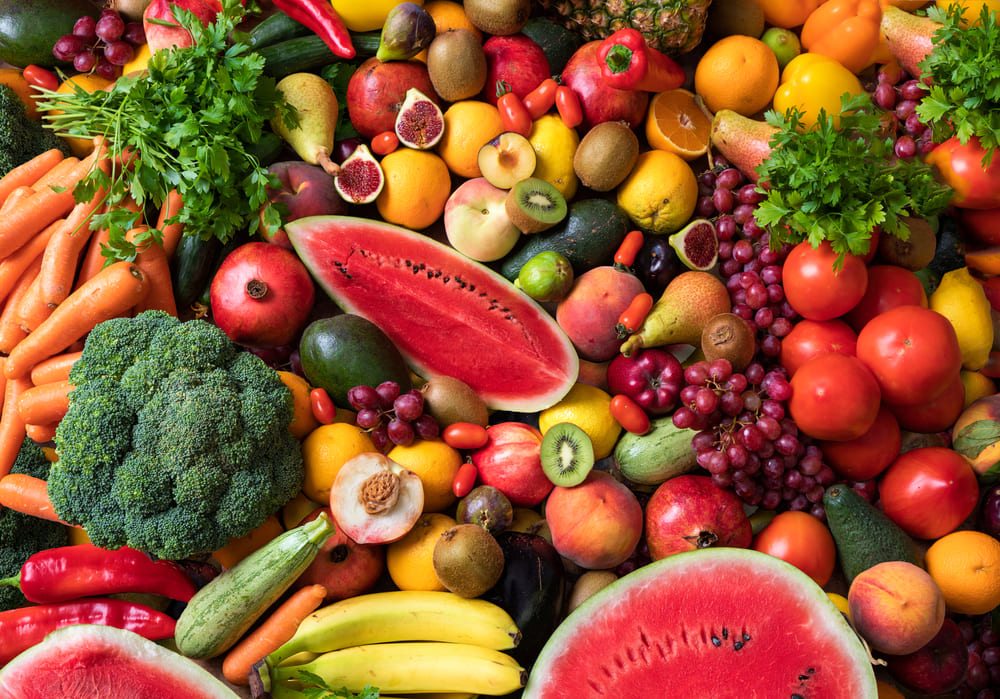


We are all perhaps more familiar with the carbohydrates, proteins, and fats in our diets, so we may give less attention to those other factors vital to our well-being and health … like the vegetables and fruits we eat.
Generally, vegetarians have no problem including fresh seasonal produce in their diets. But even they are often confused about which vegetables and fruits are good for them, and which are not as helpful.
Those on non-vegetarian diets might find they often don’t think hard enough about their vegetable and fruit intake as they should. They may have to incentivize themselves to include enough of these each day to infuse more nutritional nuances into their diets.
Also, at this time, when most of us are deeply concerned about building our immunity from viruses, fruits and vegetables have a significant role to play. They protect our defenses and increase our vitality. They supply our bodies with countless micronutrients, vitamins, and minerals to increase vigor and zest.
Let’s learn more about all of this to improve the variety and impact of our diets. There are ways to make healthful, wholesome food tastier and more therapeutic too.
The World Health Organization (WHO), in 2003, started the “5-A-Day” idea and recommended eating a minimum of 400g of fruit and vegetables a day to lower the risk of severe health problems, such as heart disease, stroke, and some types of cancer.
WHO further recommended dividing the daily 400g into at least 5 portions of 80g (which included a mix of both fruits and vegetables).
The British Heart Foundation (BHF) does a lot of public interest advocacy on this “5-A-Day” concept. In the US, the American Heart Association (AHA) carries the idea further and says that the right “5-A-Day” mix is 2 fruit and 3 vegetable servings for longer life.
The National Health Service (NHS) of the UK, suggests that the top 5 benefits of consuming a variety of fruits and vegetables are these:

The American Cancer Society further adds that fruits and vegetables with the most dense color – dark green, red, yellow, and orange – have the most nutrients beneficial to those with cancer or having a hereditary predisposition to cancer.
Besides all this, those suffering from chronic ailments such as obesity, cholesterol, diabetes, and hypertension need more intake of fruits and vegetables. When these ailments combine with other hereditary factors, they can all have a multiplicative effect on the heart.
The right combinations of these fresh and nutritious ingredients in our meals can help control early symptoms of diabetes. They can decrease cholesterol levels, and palliate high blood pressure symptoms. They must also be part of any obesity diet plan.
Every meal allows you to check if you’ve added some fruit and veg components to your diet.
Start every morning with a bowl of fresh seasonal fruits. Or have your usual breakfast dishes with some fruit juices by the side. Give your day an immunity-boosting start.
At lunch or dinner, get going with a thick vegetable soup. It satiates hunger to a great extent and makes you eat less of other foods that follow.
Most Indian homes have lots of vegetables with rice, rotis, and dhals. A rounded meal usually has some “sukhi bhaji” (sautéed dry vegetable dishes), some “gili sabzi” (vegetables in a gravy), plus some salads, raitas, or veg-based chutneys. Have these dishes in addition to lean meats if you are a non-vegetarian.

You can round off your meals with a bit of fresh fruit – and pass up those over-rich sweet dishes.
Fruits are excellent replacements for those harmful processed snacks you may crave at any time of the day. You can also have the “all-in-one-whisk” smoothie at any time. Put all the vegetables and fruits you have at hand in a mixer-blender, add a bit of ice, process till frothy, and savor the refreshing result.
Winneshieck Medical Center, part of the Mayo Clinic Health System, has stressed the importance of a “colorful diet.” Nature has blessed fresh agricultural produce with colors that indicate their nutritional variations. There are believed to be five major color groups for all vegetables and fruits.
These protect our hearts. The red shades indicate the presence of antioxidants that reduce the risk of developing atherosclerosis, hypertension, and high cholesterol. They also help lower the risk of developing different types of cancer, protect against heart diseases, and improve brain function.
These help prevent heart disease, stroke, and cancer. They are essential for your memory and promote healthy aging. They also protect urinary tract health and regulate healthy digestion.
These contain nutrients that protect your nervous system, promote eye health, and prevent heart diseases. They are important for improving skin health, boosting your immune system, and helping build strong bones.
These protect your eye health. They also safeguard you from cancer and bad cholesterol, regulate digestion, and improve your immune system. Green leafy vegetables also contain folic acid – which is important for pregnant women as it reduces the risk of their babies developing congenital disabilities.
These contain nutrients known to lower blood pressure and bad cholesterol levels. They also have a great immune-boosting effect on your body. Their nutrients minimize the risk of colon, prostate, and breast cancer.
Must See: The American Heart Association has a beautiful infographic titled “Eat More Color,” which shows all the fruits and vegetables you can choose from various color groups. Their mantra for you to follow?
“The best way to get all of the vitamins, minerals, and nutrients you need is to eat a variety of colorful fruits and veggies. Add color to your plate each day with the five main color groups.”
(Click here to see their fascinating infographic).
If fruits and vegetables fill half your plate, as the experts advise, you will stay protected and safe from many an illness. You will gain clarity of mind, physical rejuvenation, and a sense of pleasant well-being. Besides, many of these colorful foods can do great things for your heart. Stay heart-healthy. Be a Zinda Dil.